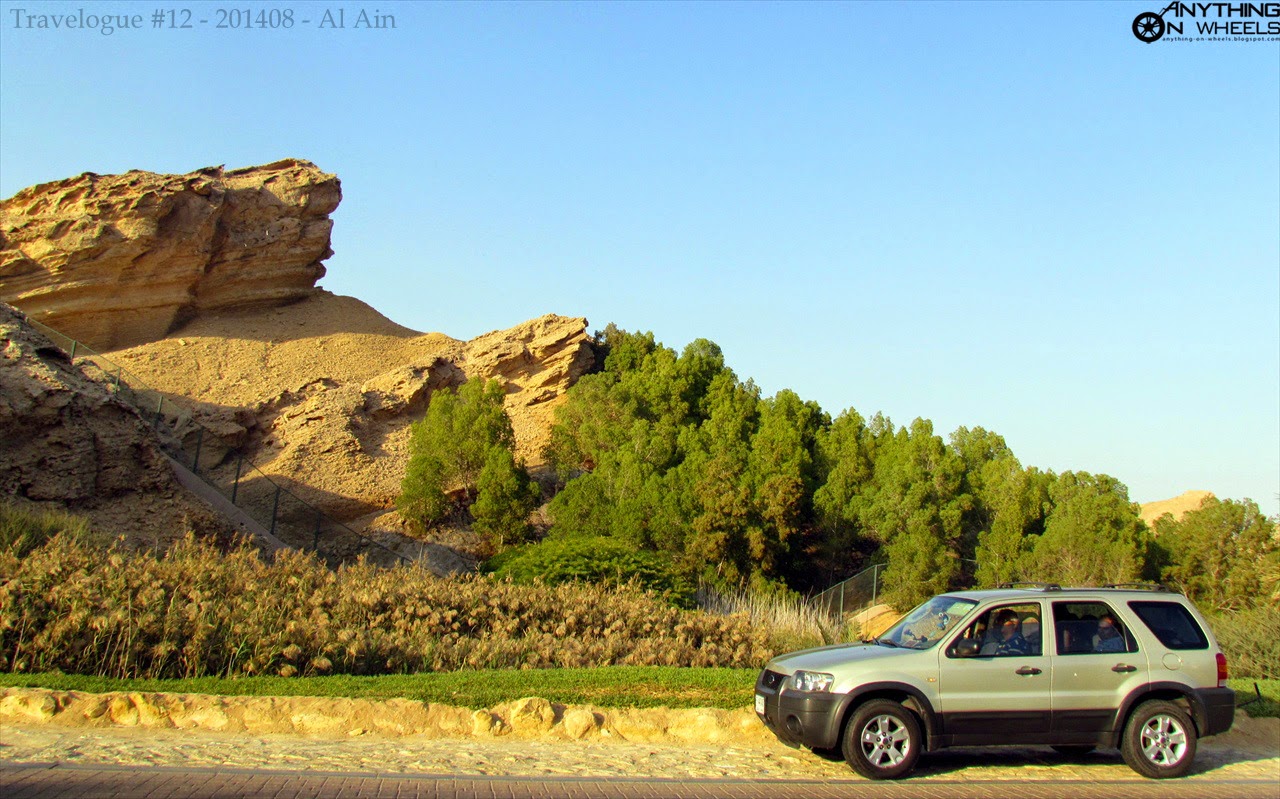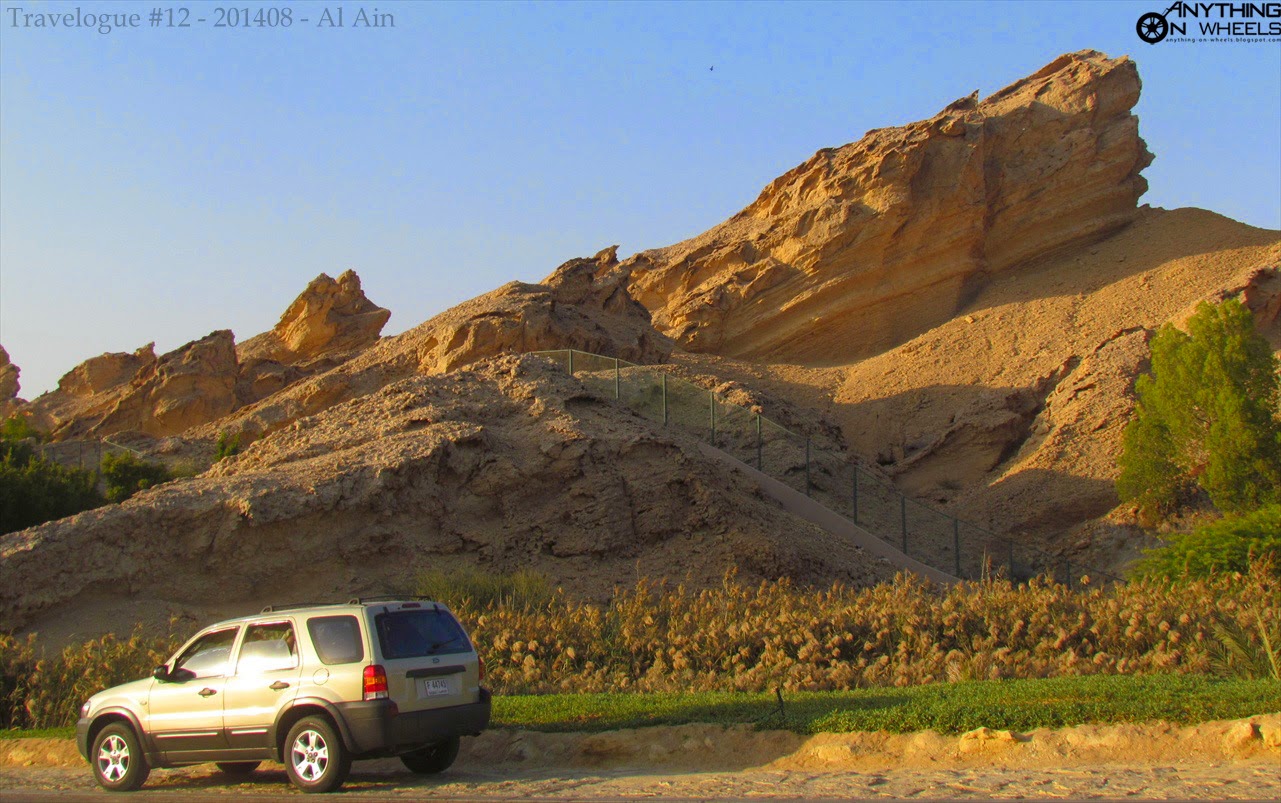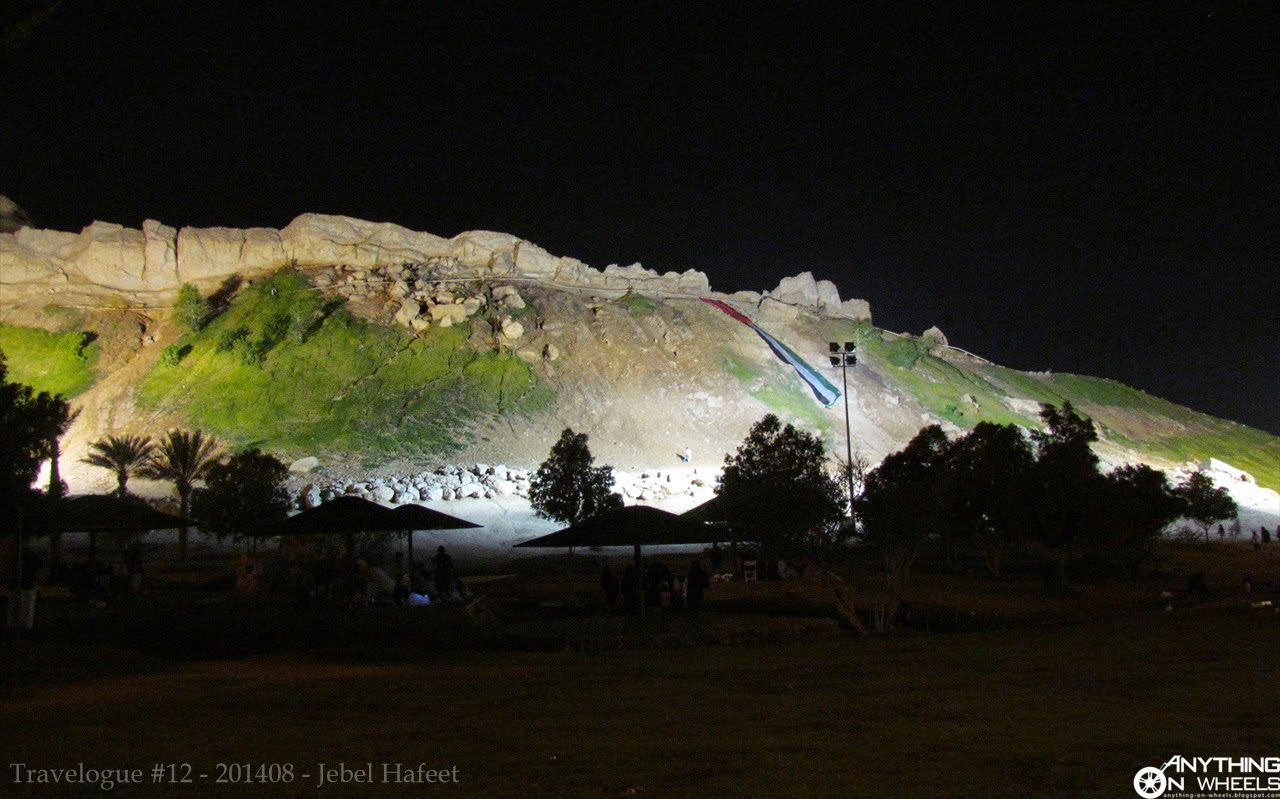For all its glory, Dubai has a downer, a rather big one at that. The notorious rush-hour traffic that often brings the city and its suburbs to a standstill can get on your nerves, literally. It did, for us, on a recent visit. Frustrated, we were looking at just two options for the next day - either curl up in our beds and laze around or head out for a long drive that ends in a stretch of tarmac considered to be amongst the world’s best driver’s roads. Obviously, we chose the latter.
So, Jebel Hafeet it was, a decision predominantly driven by the lure of the awesome 11-km final stretch that makes car enthusiasts go crazy. Jebel Hafeet is a popular mountain in the United Arab Emirates, bordering the neighboring country of Oman. At the foothills of this mountain is Al Ain, fourth largest city in the UAE that has a handful of places to keep tourists engaged. With the destination decided, a first-gen Ford Escape with more than 80,000 kilometers on the odo was all we had at our disposal. Quite old no doubt, but it’s a Ford after all! And so, we were good to go.
Next morning, we got moving at 07:00 AM sharp, knowing that’s the only way to evade traffic. The awesome roads in Dubai might tempt us to get excited, but remember the fact that they are constantly monitored and patrolled. Though we had an UAE resident showing us the way, clear directions and exit signs everywhere means that visitors are unlikely to get lost. Wherever one stays in Dubai, Sheikh Zayed Road (E 11) and Sheikh Mohammad Bin Zayed Road (formerly Emirates Road, E 311) aren't inaccessible. From either of them, follow the exit marked E 66 to end up in Dubai - Al Ain Road.
Wide, smooth and arrow straight for the most part, piercing through vast stretches of sand on either sides and sprinkled with well-behaved traffic that throws no surprises, highways in the UAE can be really boring to drive on. The E 66 was no different. It’s hard to believe that this very road was notorious for accidents and casualties a few years back. Minimum speed limit in the E 66 is 60 km/h while the maximum is 120 km/h for cars. Radar guns are installed at regular intervals to pick up over-speeding vehicles but impatient souls have smarted the technique of zooming well over the limit between the installations and shedding speed just in time to evade the gun. Watch out for them! Entry to Al Ain city is clearly marked and can’t be missed. Coming from the hustle and bustle of Dubai, what struck us immediately was Al Ain’s calm and laidback nature. Roads were reasonably wide, traffic was sparse and, true to its “Garden City” tag, Al Ain had greenery all around.
Since our target was to be at the top of Jebel Hafeet in time for sunset, we had quite a few hours to spare. Our first stop was Al Ain Zoo. Though nothing new, this zoo has a big cat house and an interesting bird cage that’s worth a visit. When it was time for lunch, we headed to “Green Mubazzarah”, a popular picnic spot right at the foot of Jebel Hafeet. Natural hot water springs originate here and form big deep puddles all over the place. Sensing an opportunity, the authorities have developed the place into a full-fledged tourist attraction, complete with lush greenery over the mountain slopes, barbecue grills with shelters and ample car parking spaces. There is a historic dam right next to Green Mubazzarah for those interested in ages gone by. With most of the afternoon spent, it was time to kick off the most-awaited leg of the drive at 04:00 PM.
Measuring 11.7 km from the plains to the top, the Jebel Hafeet Mountain Road is a brilliant piece of engineering and a marvelous road to drive on. With two lanes for uphill traffic and one for downhill traffic, this smooth and curvy road can mount a challenge to the best of race tracks in terms of asphalt quality and for the sheer thrill it offers. View points en route offer spectacular views of the road itself and the vast plains surrounding the mountain. Given a chance, we would love to spend an entire day driving the wheels off a sports car up and down the Jebel Hafeet mountain. It’s that good! The statements that we just made might have failed to excite you, but we are sure these pics won’t.
We reached the top in no time only to find that the road just abruptly ends in a big parking lot that offers a panoramic view of the plains. Sunset from this place, with cool breeze gushing over you from all sides, is indeed good to experience. There is nothing else to do at the top apart from grabbing a bite in the strictly-average-quality restaurant adjacent to the parking lot. Right opposite to this, a few meters down the road, there is a luxury hotel and a palace belonging to one of the sheikhs of Abu Dhabi. It might seem the most unlikeliest of locations but we can’t stop drooling over the prospect of driving up and down this road to reach the hotel or the palace.
Amidst swears that we are coming back to Jebel Hafeet in a road-hugging, rear-wheel-drive sports car, we started our drive back to Dubai in our trusty old Escape. View of the Al Ain city from one of the view points in Jebel Hafeet mountain and view of the mountain road itself from the plains below with the lights lit up are worth a stop each on the way back.
This small SUV from Ford might look like a total misfit to a destination like this but, believe us, the Escape's minimal body roll and predictable handling did let us enjoy those awesome curves that the Jebel Hafeet mountain road had on offer. There was no problem accommodating five of us, all full-sized adults, and the knick-knacks that we carried. What was apparent though was the lack of relative grunt all through the rev range. The Escape was no match to the EcoBoosts, V6s and V8s scorching the roads. Wear and tear resulting from close to a decade of vintage and more than 85K kilometers on the odo also made their presence felt. Some interior plastics had turned pale while the muffler was about to give up soon. Other than that, the Escape did live up to its name and let us escape the mad rush of Dubai, even if it was just for a day.
TRAVELOGUE STATISTICS:
* Destination: Jebel Hafeet
* Route driven: Dubai - Al Ain - Jebel Hafeet - Dubai
* Total distance covered: 359 km
* Toll & Parking Charges: 0 Dirhams
* Number of days: 1
* Vehicle Make & Model: Ford Escape
* Odometer Start: 86576 km
* Odometer End: 86935 km
* Average trip fuel efficiency: 8.2 km/l
* Best time to visit: December
* What not to forget: Plan to be at the top for sunset
* Fun Tip: A fun-to-drive car should be on top of your list of requisites for this drive. The asphalt and those curves are so addictive!














































